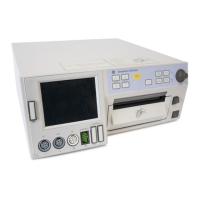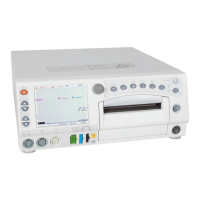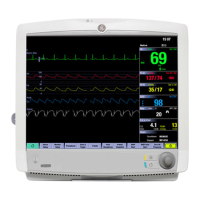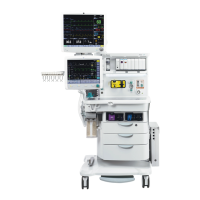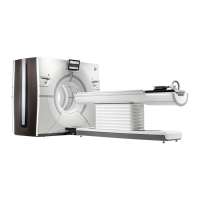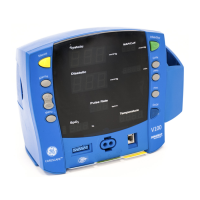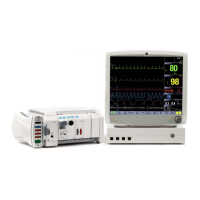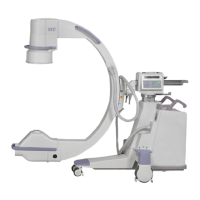Revision D 170 Series Monitor 5-7
2003023-001
Fetal Heart Rate Monitoring: Heartbeat Coincidence
Heartbeat Coincidence
Heartbeat coincidence is available on Models 172, 173, and 174 (dual heart rate
monitors) to alert you when you may be monitoring a duplicate signal. Heartbeat
coincidence is indicated when two heartbeats have a consistent phase relationship
for equal to or greater than 60% of the detected beats for about 60 seconds; the
cessation of coincidence is indicated when the phase relationship is inconsistent for
greater than 40% of the detected beats for about seven seconds.
Table 5-1 summarizes the combinations of heart rate sources that are continuously
compared for the possibility of coincidence.
Enabling/Disabling Heartbeat Coincidence Detection
The heartbeat coincidence detection feature can be enabled/disabled from a service
setup mode. Refer to the “170 Series Service Manual” for more information.
Display Indicator
When heartbeat coincidence detection is enabled, and the monitor detects two
heartbeats that appear to be coinciding, this may indicate that both heart rate
channels are picking up the same signal. When this coincidence occurs, the heart
rate numerics for both heart rates flash alternately (one on while the other is off). As
soon as coincidence is resolved, the numerics stop flashing.
If you disconnect a transducer while coincidence is detected, the numerics stop
flashing.
IMPORTANT
ALARMS PRECEDENCE—Alarms take priority over heartbeat
coincidence. If a fetal heart rate alarm occurs while coincidence is
detected, the pair of numerics stops flashing alternately; only the
alarming parameter numerics continue flashing. If both, fetal heart
rates violate alarm limits, both heart rate numerics flash
synchronously. Fetal heart rate alarms are also indicated by a
flashing Alarm indicator and an audio indicator.
Table 5-1. Heartbeat Coincidence Comparisons
Mode FECG US US2
FECG Model 173 Model 174
US Model 173 Models 172, 174
US2 Model 174 Models 172, 174
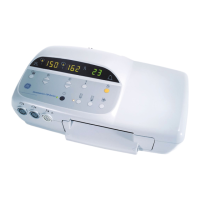
